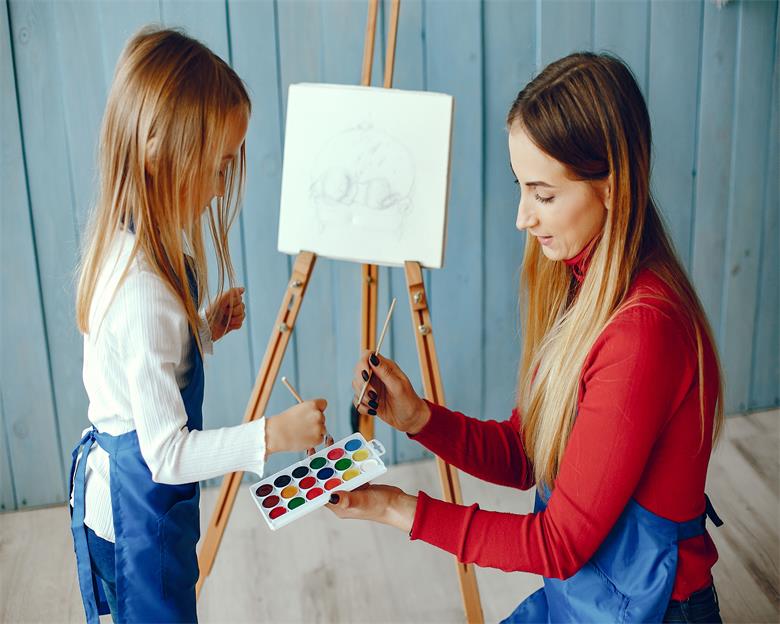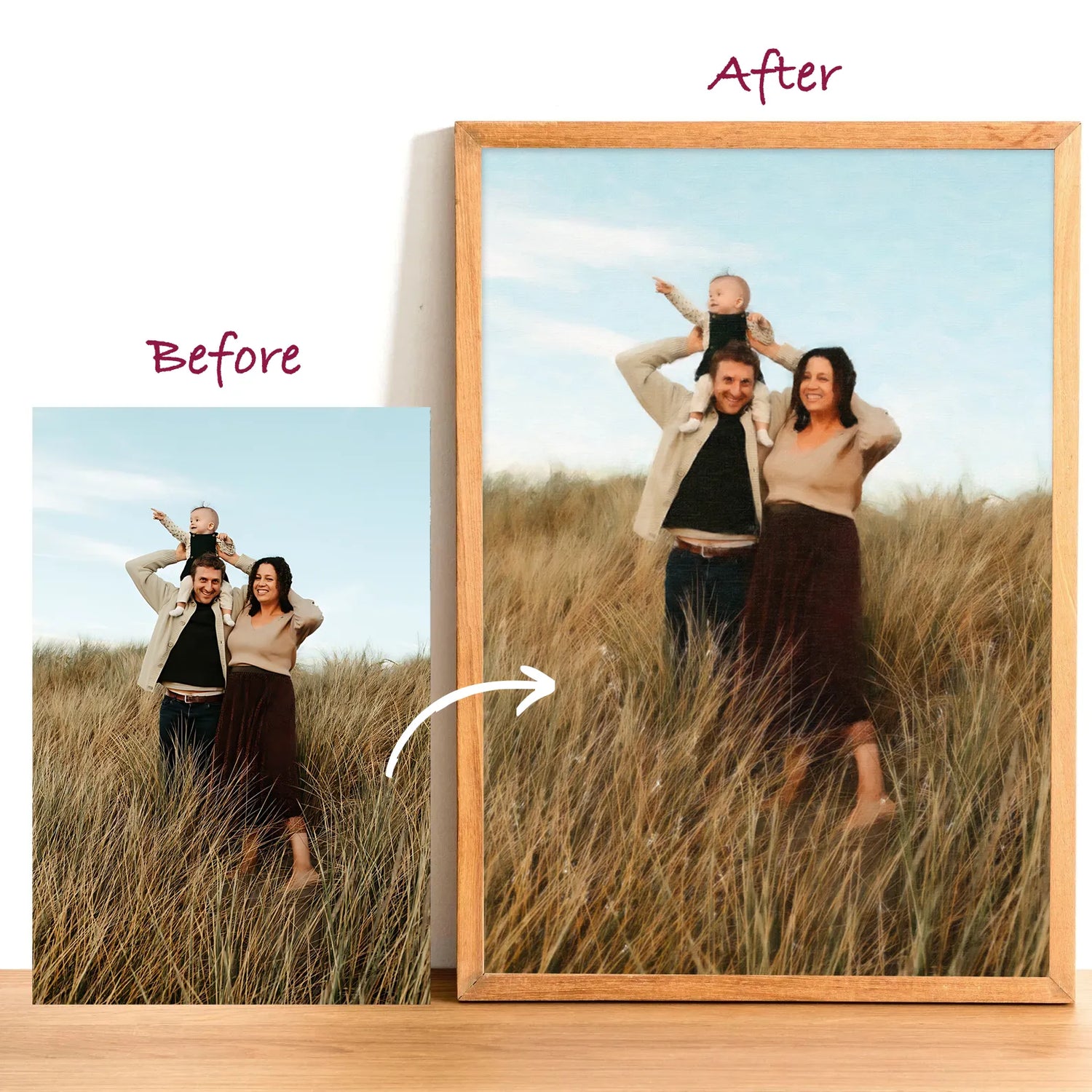Paint by Numbers: Artistic Enlightenment and Family Bonding on Children’s Day
Emerging as a revolutionary blend of art and accessibility, Paint by Numbers has evolved from a 1950s pastime into a customizable creative phenomenon, empowering families to transform personal memories into vibrant, collaborative artworks.

The Charm of Paint by Numbers: From Tradition to a Customized Art Revolution
Paint by Numbers, a creative form that blends art and play, has captivated global audiences since its emergence in the 1950s. By dividing the canvas into numbered color blocks, it guides creators to fill in corresponding pigments, allowing anyone to complete a polished artwork. This approach not only lowers the technical barriers to painting but also lets ordinary people experience the joy of artistic creation.
With the rise of personalized demand, Custom Paint by Numbers has gained momentum. Parents can upload their children’s doodles, family photos, or favorite cartoon characters to create bespoke Paint by Numbers kits. For example, customizing a family portrait for a birthday or a festive-themed artwork for Children’s Day adds emotional value to art while sparking children’s creative enthusiasm.
Children’s Day and Paint by Numbers: A Perfect Blend of Fun and Learning
Children’s Day is not just a celebration but an opportunity to nurture creativity and strengthen family bonds. In Western countries, Paint by Numbers has become a vital tool for connecting art education, parent-child interaction, and technological innovation.

Parent-Child Interaction: Cross-Generational Collaboration and Community Co-Creation
At France’s Constellation de Metz Summer Art and Culture Festival, Paint by Numbers is integrated into historical architectural light shows. Parents and children collaborate on coloring templates inspired by Gothic stained-glass windows. Their works are digitally projected onto the dome of Saint-Étienne Cathedral, creating dynamic fantasy landscapes. When children touch the walls, moss and flowers "grow" with their movements, and mythical creatures dance to music, transforming family collaboration into public art.
In Barcelona’s Digital Graffiti Festival, families use AR technology to turn completed Paint by Numbers artworks into interactive murals in public squares. Scanning the artwork triggers animations—for example, fish painted in an ocean theme swim in a virtual underwater world. This tech-driven approach extends family creativity from private spaces to urban cultural scenes, fostering children’s sense of social participation.
North America’s popular Family Painting Subscription Services (e.g., Canada’s "Timeline of Growth" project) transform annual travel photos or children’s drawings into serialized kits. A father-son duo in Vancouver, for instance, spent three months completing a 3-meter-long "Pacific Coast Road Trip" mural, using art to document their journey and strengthen intergenerational bonds.
Artistic Enlightenment: STEAM Education and Inclusive Innovation
Schools in London, UK, incorporate Paint by Numbers into STEAM curricula. For example, students observe plant cells under microscopes, simplify the structures into numbered templates, and color-code components like cell walls and chloroplasts while learning biology.
In California, "Painting + Coding" workshops combine Scratch programming with Paint by Numbers. After completing a forest-themed artwork, children code interactive effects—touching trees triggers bird sounds, while streams activate LED water flows—blending logic with aesthetic expression.
German special education schools use Paint by Numbers to support children with autism. Structured tasks (e.g., completing symmetrical patterns by number) improve focus, while group projects (e.g., co-creating cityscapes) build social confidence, showcasing the inclusive value of art education.
Mental Wellness: Tech-Driven Healing and Social Care
The Netherlands’ Smart Canvas project merges Paint by Numbers with IoT technology. Children use conductive paint to create artworks where touching trees plays natural sounds, and streams activate LED water simulations. This multisensory experience helps alleviate stress while teaching the synergy of art and technology.
The European nonprofit Art for All launches cross-border Paint by Numbers initiatives for Children’s Day. Kids design "Dream Home" templates, which are turned into kits sent to refugee camps. Online platforms enable collaborative creation between children from different regions, using art as a tool for emotional healing and solidarity.
France’s AI Painting Assistant app converts children’s doodles into custom Paint by Numbers templates in real time. For instance, a child’s scribbled "alien creature" is optimized into a colorable fantasy character, preserving creativity while providing structured guidance.
Global Case Studies: Paint by Numbers in Children’s Day Practices
Paint by Numbers, as a medium for art education and family bonding, showcases diverse innovations in Western Children’s Day activities. From community festivals to tech-driven projects, these cases highlight the personalized appeal of Custom Paint by Numbers and its multidimensional value in child development.
Community Festivals: Immersive Art-Tech Experiences
At France’s Constellation de Metz Festival, artist Vincent Masson’s Morphosis light show transforms Gothic architecture into a dynamic "digital canvas." During Children’s Day, local schools guide kids to create Paint by Numbers templates inspired by stained-glass windows, which artists project onto cathedral walls. Mythical creatures and blooming flowers "come alive" with music, blending history, art, and technology.
Similarly, Barcelona’s Digital Graffiti Festival provides custom Paint by Numbers kits featuring city landmarks or ecosystems. Completed works are displayed via AR in public squares, forming a "virtual gallery" where families interact with animated versions of their art.
School Education: Cross-Disciplinary Creativity
London schools integrate Custom Paint by Numbers into STEAM programs. During science weeks, students convert microscope observations of plant cells into numbered templates, coloring parts like cell walls while learning biology. Special education schools use these kits to help autistic children improve focus and teamwork.
A California-based education institute developed a "Paint by Numbers + Coding" course. After finishing a painting, children use Scratch to add interactive effects—clicking a flower triggers growth animations—bridging art with computational thinking.
Social Impact: Empathy and Cultural Connection
The nonprofit Art for All organizes Children’s Day initiatives where kids design Paint by Numbers templates (e.g., "Friendship Hands") for refugee peers. Kits are sent to camps, and online platforms enable cross-border collaboration, fostering empathy and hope.
Italy’s Uffizi Gallery’s "Masterpiece Co-Creation Project" decomposes Botticelli’s Spring into Paint by Numbers modules. Families color sections during workshops, and the assembled digital mural is projected onto the gallery’s dome, letting children "dialogue" with art history.
Tech Innovation: From Static to Dynamic Art
Eindhoven’s Smart Canvas combines Paint by Numbers with IoT. Children use conductive paint to create interactive scenes—touching trees plays bird songs, while streams trigger LED water effects—demonstrating the fusion of art and technology.
France’s AI Painting Assistant app instantly converts children’s sketches into customizable kits. In workshops, kids start with freehand drawings, then use the app to generate structured templates, balancing creativity with guided expression.
Family Bonding: Custom Memories and Intergenerational Dialogue
North America’s Family Painting Subscriptions turn annual photos or children’s art into serialized kits. A Vancouver father and son spent months creating a 3-meter "Pacific Coast Journey" mural, immortalizing travel memories through collaborative art.
A Berlin-based company offers "Intergenerational Kits" where grandparents paint traditional architecture and grandchildren design futuristic cities. AR merges their works into surreal landscapes, bridging cultural heritage and innovation.
Key Takeaways from Western Practices
Western Children’s Day initiatives emphasize personalization, tech integration, and social impact. Whether through community light shows or refugee collaborations, Paint by Numbers transcends entertainment, becoming a vehicle for cultural preservation, educational innovation, and societal inclusivity. As AI and metaverse technologies evolve, Custom Paint by Numbers may become a gateway for children to explore hybrid digital-physical art worlds.
How to Organize a Children’s Day Paint by Numbers Event?
Material Preparation
- Basic Kits: Choose child-friendly sizes (e.g., 20×30cm) with 10–15 colors to avoid frustration.
- Custom Upgrades: Use Custom Paint by Numbers services to design themes like "Space Adventure" or "Enchanted Forest."
- Tools: Provide dual-tip brushes, disposable cups, and absorbent cloths for ease of use.
Activity Design
- Icebreakers: Start with color-matching games (e.g., "Color Treasure Hunt").
- Creative Sessions: Set incremental goals (e.g., "Complete 1/3 in 30 minutes") with rewards like sticker badges.
- Exhibition: Host a mini-gallery where kids explain their works and receive "Young Artist" certificates.
Conclusion
Paint by Numbers is more than a fleeting trend—it’s a lasting medium for art education and family connection. When Custom Paint by Numbers meets a child’s imagination, every stroke becomes a cherished memory. This Children’s Day, pick up a brush and co-create your family’s "digital masterpiece" with 1001 Canvas, where personalized art kits transform your photos and doodles into vibrant, frame-worthy treasures. After all, the greatest gift is the joy of creating together—and with 1001 Canvas, that joy becomes a legacy.



